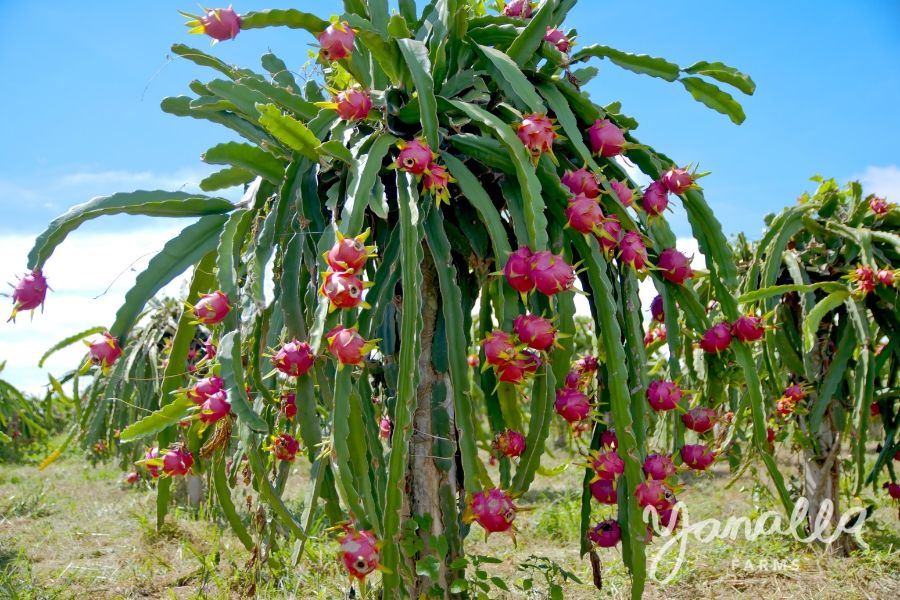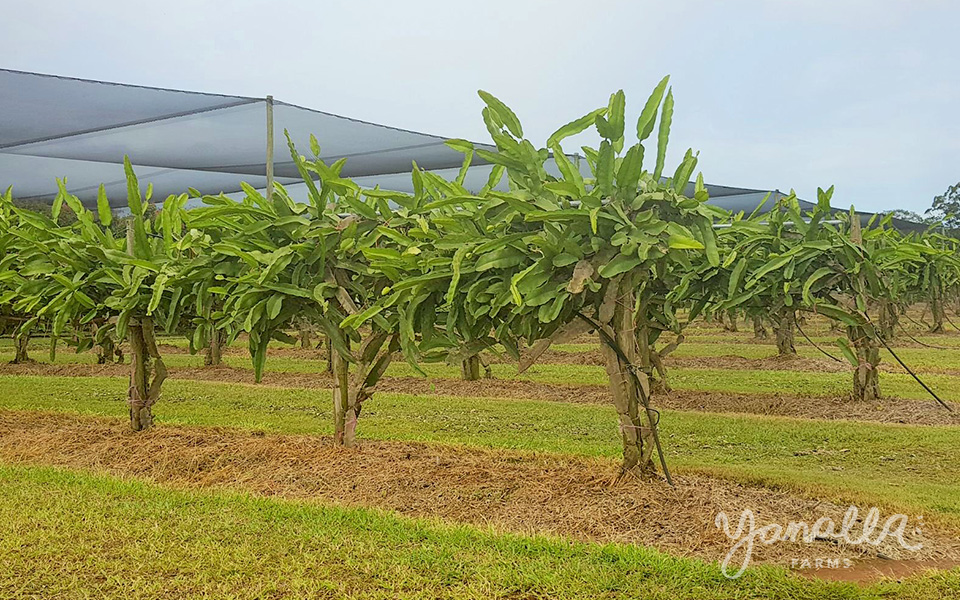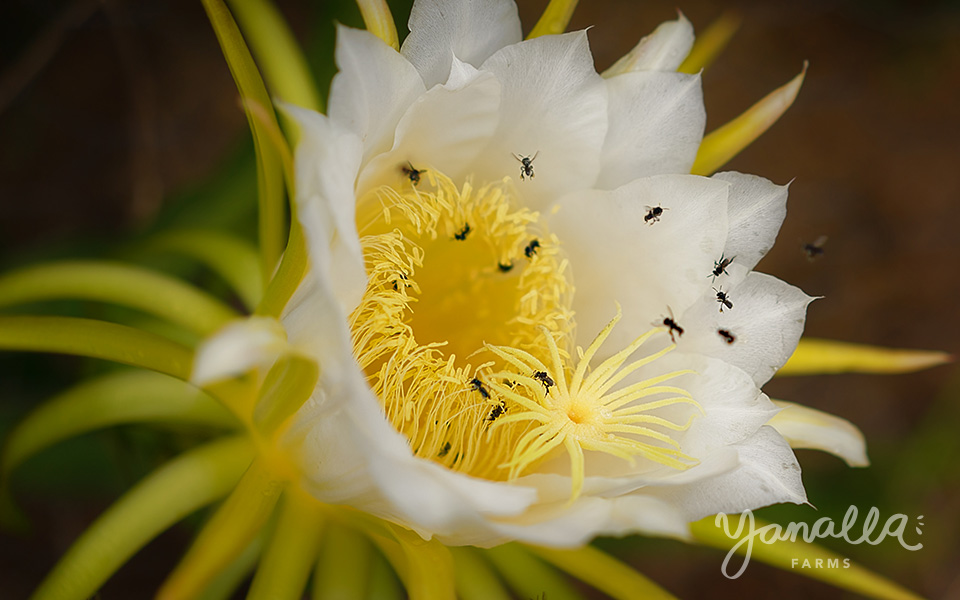The dragon fruit (native to South America where it is known as pitaya) has become a popular choice for juices, smoothies and exotic fruit salads.
The name ‘dragon fruit’ comes from Asia where the climbing cactus with its triangular green stem segments with scalloped wings and spines must have reminded people of dragons. Its association with dragons means it symbolises power, vitality and luck.
Dragon fruit is rich in vitamins including vitamin C, B1, B2 and B3. They are also rich in minerals including calcium, iron, magnesium and phosphorus and are a good source of fibre, protein and omega essential fatty acids. Explore some exotic Dragon Fruit Recipes.
Our Varieties

Two varieties of dragon fruit are grown at Yanalla Farms.
The pink-skinned fruit with white flesh (Hylocereus Undatus) is grown on a single post, with top branches billowing out like an umbrella. The branches are encouraged to hang down to promote flowering and fruit set.
The red-skinned fruit with red flesh (Hylocereus Polyrhizusis) is different in its growth habit and prefers to sprawl along a 3-wire trellis. Lateral branches are tied to the trellis for support.


Dragon fruit flowers bloom spectacularly for one night. The white flowers open in the late afternoon for insect pollination, then close early the next morning. Once pollinated, the flower petals dry up and the base developes into young fruit. After about 30-35 days, the green coloured fruit ripens and is ready to pick.

